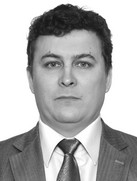Movement construction: from theory to practice
Фотографии:
ˑ:
PhD, Associate Professor R.M. Gimazov1
1Surgut State Pedagogical University, Surgut
It was in the middle of the XX century that N.A. Bernstein came up with a human movement construction theory, although the brilliant findings of the scientists had remained virtually unused in practice for quite a long time. The article gives a special consideration to the role of motor abilities of sub-cortical and cortical levels of the nervous system in the movement construction process. The first two nervous system levels appear to create due prerequisites for the movement construction inside the body for the visible part of the movement sequence; with the subsequent three levels contributing to the ongoing construction of the visible movement. Every nervous system level contributes to every individual’s movement construction process. The movement construction quality largely depends on the numbers of the process construction errors made in every nervous system level in the process.
Keywords: movement construction, nervous system levels, aspects of motor qualities, education process control.
References
- Bernstein N.A. Biomekhanika i fiziologiya dvizheniy: Izbrannye psikhologicheskie trudy [Biomechanics and physiology of movements: Selected psychological works]. Ed. V.P. Zinchenko. 3rd ed., ster. Moscow: MPSI publ.; Voronezh: MODEK publ, 2008, 688 p.
- Bernstein N.A. O postroenii dvizheniy [On construction of movements]. Moscow: Medgiz publ, 1947, 254 p.
- Gimazov R.M. Teoretiko-metodicheskoe obosnovanie pedagogicheskogo kontrolya svoystv dvigatelnykh sposobnostey subkortikalnykh urovney postroeniya dvizheniy u sportsmenov. Avtoref. dis. dokt. ped. nauk [Theoretical-methodical substantiation of teacher monitoring of properties of motor abilities of subcortical levels of construction of movements. Doct. diss. abstract (Hab.)]. Moscow, 2017, 48 p.
- Korenberg V.B. Osnovy sportivnoy kineziologii. Ucheb. posobie [Fundamentals of sports kinesiology. Study guide]. Moscow: Sovetskiy sport publ, 2005, 232 p.



